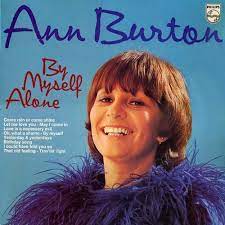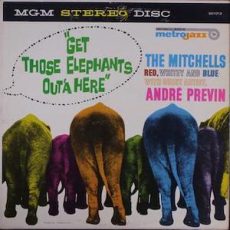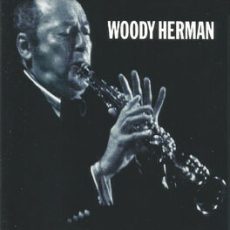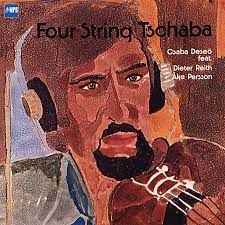
Daily Dose Of Jazz…
Ann Burton was born Johanna Rafalowicz on March 4, 1933 in Amsterdam, Netherlands. When she was 3 years old her mother married a diamond worker and in 1938 her surname was changed to her stepfather’s and she became Johanna de Paauw, which was her official name until 1971, when she again changed it back to Rafalowicz.
During World War II her family faced Jewish persecution under the German occupation and she went into hiding while her mother and stepfather survived the Nazi concentration camps. However, the family became disrupted when her stepparents were deprived of parental power. Johanna, who had Polish nationality, acquired Dutch nationality in 1957.
Johanna never had singing lessons, but she had listened to American singers like Doris Day, Jo Stafford, Rosemary Clooney, Ella Fitzgerald and Sarah Vaughan. Later, Billie Holiday and Shirley Horn influenced her. She wanted to get into the music world and so in about 1955 she took the name Ann Burton inspired by the Welsh actor Richard Burton.
Ann Burton began her career as a singer with a quintet in Luxemburg. She sang with bandleader Johnny Millstonford and performed in clubs with the orchestra of Ted Powder for American soldiers in Germany.
In the summer of 1958 she sang in the quartet of pianist Pia Beck in Scheveningen and in 1960 they toured with saxophonist Piet Noordijk in Spain and Morocco. Returning home she continued singing and in 1965 she made an EP for Decca Records with the nl:Frans Elsen Trio. Later she joined Ramses Shaffy’s group Shaffy Chantant.
The late sixties saw Ann getting noticed by John J. Vis, the director of the record company Artone, who produced her first album Blue Burton in 1967. She became popular and the album received an Edison Award in 1969. A few more records in 1969 and 1972 were released in collaboration with John Vis.
In 1973, she toured Japan, where she became the most popular jazz singer, second only to Ella Fitzgerald. She made numerous albums with Masahiko Sato and Ken McCarthy and others. In the late seventies she worked in New York, where she made several albums, some of which were with Grady Tate and Buster Williams with singer Helen Merrill producing the albums. For “New York State of Mind” Burton also received an Edison award.
In the eighties she founded her own record label, Burtone, that produced her albums. During the period 1986–1988 she taught at the Amsterdam Conservatory.
Vocalist Ann Burton, who recorded twenty-one albums, transitioned at the age of 56 due to throat cancer on November 29, 1989 in Amsterdam.
More Posts: bandleader,history,instrumental,jazz,music,vocal

Daily Dose Of Jazz…
Gordon “Whitey” Mitchell was born on February 22, 1932 in Hackensack, New Jersey. He began on clarinet and tuba as a youngster before choosing bass as his primary instrument. He studied radio & television at Syracuse University and then plunged into the New York jazz scene, becoming a regular at the famed nightspots Birdland and Basin Street East.
He led his own groups at The Village Vanguard and The Embers and later toured with big band greats Benny Goodman and Pete Rugolo, played Carnegie Hall with Gene Krupa, appeared with Buddy Rich, Ella Fitzgerald, Dizzy Gillespie and Lester Young on Jazz At The Philharmonic.
In the early 1950s he played with Elinor Sherry and Shep Fields before serving in the Army during the Korean War. From 1954 he worked freelance in New York City, playing with Gene Krupa, Mel Tormé, Jack Jones, J.J. Johnson, Kai Winding, Lester Young, Charlie Ventura, Herbie Mann, Betty Roche, Oscar Pettiford, Gene Quill, Joe Puma, Johnny Richards, Peter Appleyard, André Previn, Benny Goodman, and again with Rugolo.
He performed on hundreds of recording sessions, television and film scores but only released one album under his own leadership on ABC-Paramount in 1956, and one with his brother Red and Blue Mitchell in 1958 as The Mitchells: Red, Whitey & Blue, released on MetroJazz Records. Whitey recorded with Anita O’Day, Barbra Streisand, Anthony Newley, and played the bass solo introduction on Ben E. King’s hit record Stand By Me.
After 1965 he largely ceased playing jazz and moved to Hollywood, California on advice from Lenny Bruce and André Previn to pursue a career as a television writer. He worked on shows such as Get Smart, All In the Family, The Jeffersons, Good Times, The Mary Tyler Moore Show, The Odd Couple, Mork and Mindy, and several Bob Hope television specials. He wrote the feature film Private Resort starring Johnny Depp.
As an educator he taught screenwriting at UCLA and UC Riverside. In 1995 he had his own radio show, The Power Lunch and wrote a golf column for a local magazine. He recorded his CD Just In Time and played jazz in all the nightclub venues. He was the author of two books, Hackensack to Hollywood: My Two Show Business Careers and Star Walk: A Guide to the Palm Springs Walk of Stars.
Bassist and television writer/producer Whitey Mitchell, who often placed in the Metronome and Downbeat jazz polls, transitioned on January 16, 2009.
More Posts: bandleader,bass,history,instrumental,jazz,music

Three Wishes
Calvin Newborn acknowledged Nica’s question of three wishes by speaking with these three:
-
- “Well, the first would be a new instrument ~ a new guitar.”
- “I want to have an estate, some property. You know.”
- “A beautiful woman.”
*Excerpt from Three Wishes: An Intimate Look at Jazz Greats ~ Compiled and Photographed by Pannonica de Koenigswarter
More Posts: baroness,guitar,history,instrumental,jazz,music,pannonica,three,wishes

Daily Dose Of Jazz…
Ronald “Ronnie” Zito was born on February 17, 1939) in Utica, New York, into a musical family including his pianist brother Torrie Zito. He began playing drums at the age of 10 and at age 14 took a year and a half of formal lessons.
He has played with Woody Herman, J.R. Monterose, Frank Rosolino, Peggy Lee, Cher, Roberta Flack and Eartha Kitt. Zito was Bobby Darin’s personal drummer for four years.
Ronnie has recorded with David Pomeranz, Barry Manilow, Irene Cara, Frankie Valli, Roberta Flack, Jake Holmes, Cher, and Don McLean.
Drummer Ronnie Zito continues to perform and record.
More Posts: drums,history,instrumental,jazz,music

Daily Dose Of Jazz…
Csaba Deseo was born February 15, 1939 in Budapest, Hungary. His mother was a violin teacher and he began playing the instrument at the age of 10. He continued his musical education at Béla Bartók Conservatory in Budapest, and got his diploma in 1961. He taught in music schools until 1967 when he became a member of the Hungarian National Philharmonic Orchestra, where he played until 1999. During the time he played innumerable concerts in Hungary and in many countries of the world from Japan to the United States. He performed with artists like Sir Georg Solti, Leonard Bernstein, Ádám Fischer, and Yehudi Menuhin, to name a few.
His career took off in 1963 when he appeared with his first group at the legendary Dalia Club in his hometown. From 1964 they gave regular concerts and were frequently featured on Hungarian Radio and TV. He would play at festivals and jamborees in the Sixties, then recorded his debut album under his own name Four String Tschaba in 1975 for MPS Records in West Germany. In that session Deseo played both violin and viola, and he would go on to record 4 LPs and 6 CDs with Hungarian and foreign musicians.
1975 saw Csaba meeting Zagreb vibraphonist Bosko Petrovic, with whom he played regularly until 2011. He also appears as a guest star in Germany, where he usually solos with the group of Walter Kurowski.
Since 1980 Deseo has fronted bands with different line-ups. His more important partners were pianist Laszlo Gardony, vibraphonist Richard Kruza, guitarist Andor Kovacs, bassist Bela Lattmann and drummer Imre Koszegi. Since 1990 he’s been working mainly in a trio and is a regular guest artist at the concerts of the Benko Dixieland Band and the Budapest Ragtime Band.
During the past few decades he has also played with international stars and is a regular contributor to the specialist Hungarian music magazine, Gramofon ~ Classical and Jazz. Violinist Csaba Deseo continues to perform and record.
More Posts: bandleader,history,instrumental,jazz,music,viola,violin



